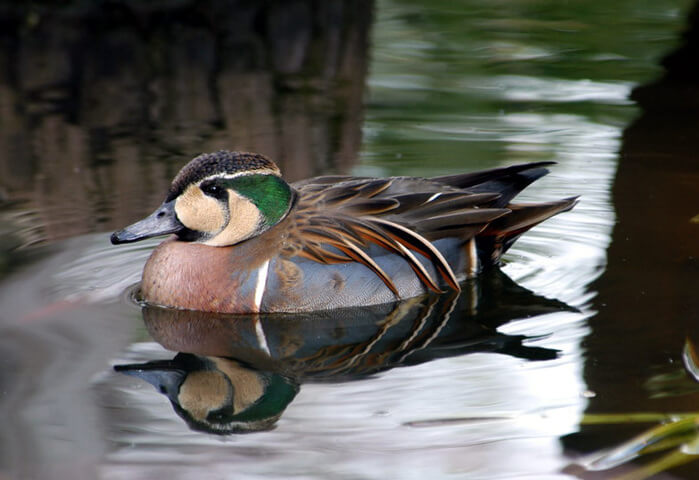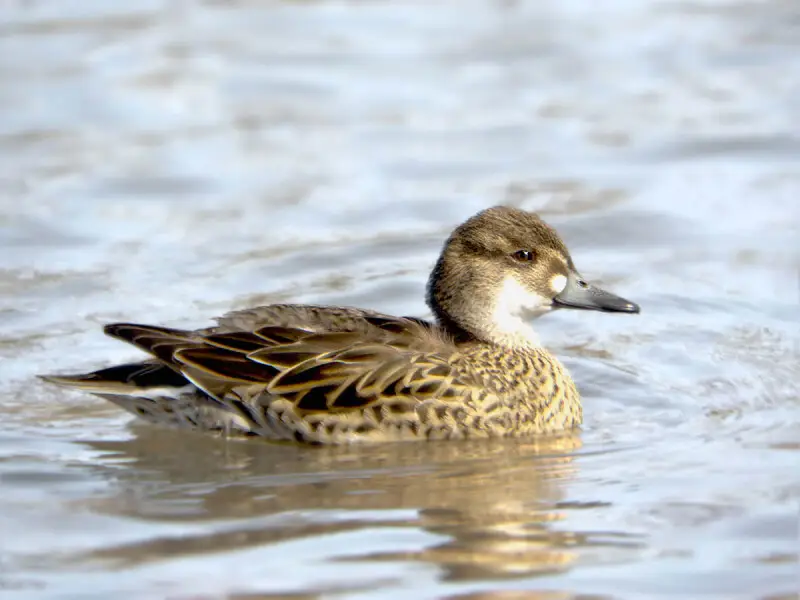Baikal Teal


Scientific Name
Sibirionetta formosa
Alternative Names
Bimaculate Duck, Squawk Duck
Measurements
| Feature | Male | Female |
|---|---|---|
| Length | 39–43 cm (15–17 in) | 39–43 cm (15–17 in) |
| Height | 30–40 cm (11.75–15.75 in) | 30–40 cm (11.75–15.75 in) |
| Weight | Around 1 lb (450 g) | Around 1 lb (450 g) |
Status
The Baikal Teal is listed as Least Concern on the IUCN Red List. Once considered Vulnerable due to hunting and habitat loss, its population has made a remarkable recovery, now estimated at over one million individuals, especially wintering in South Korea.
Identification
The breeding male Baikal Teal is unmistakable, with a green nape, yellow and black face markings, and a striking pattern of light brown and grey on the body. The female resembles a Green-winged Teal but has a longer tail, white throat, and pale spot at the base of the bill. Juveniles look like females but can be identified by a pale spot near the eye. During non-breeding season, males take on a rufous-brown plumage similar to females.
Voice
Known for its soft, high-pitched whistles and occasional squawking calls, particularly during courtship or when alarmed.
Diet
Feeds on seeds, aquatic plants, small invertebrates, and insects. They forage mainly in shallow waters by dabbling or upending.
Distribution
Breeds across eastern Siberia—from the Yenisey River basin to Kamchatka—and migrates south to East Asia. Large wintering populations occur in South Korea, Japan, and China, with smaller numbers reaching Taiwan and northern Vietnam.
Habitat
Prefers pools on the tundra edge and swampy forest areas for breeding. In winter, it gathers in huge flocks on lowland freshwater lakes, rice paddies, and flooded plains.
Breeding
They build their nests near shallow pools or wet grasslands. The female lays a clutch of eggs in concealed grassy spots, and both parents stay close to feeding areas for protection.
Wintering
Migratory, spending winters in East Asia’s mild lowlands. Thousands of birds can be seen together in wetlands, particularly in South Korea and Japan.
Conservation
Although previously threatened by overhunting and loss of wetlands, conservation measures and improved protection of wintering sites have allowed populations to recover strongly. Continuous habitat management remains crucial for maintaining this success.
